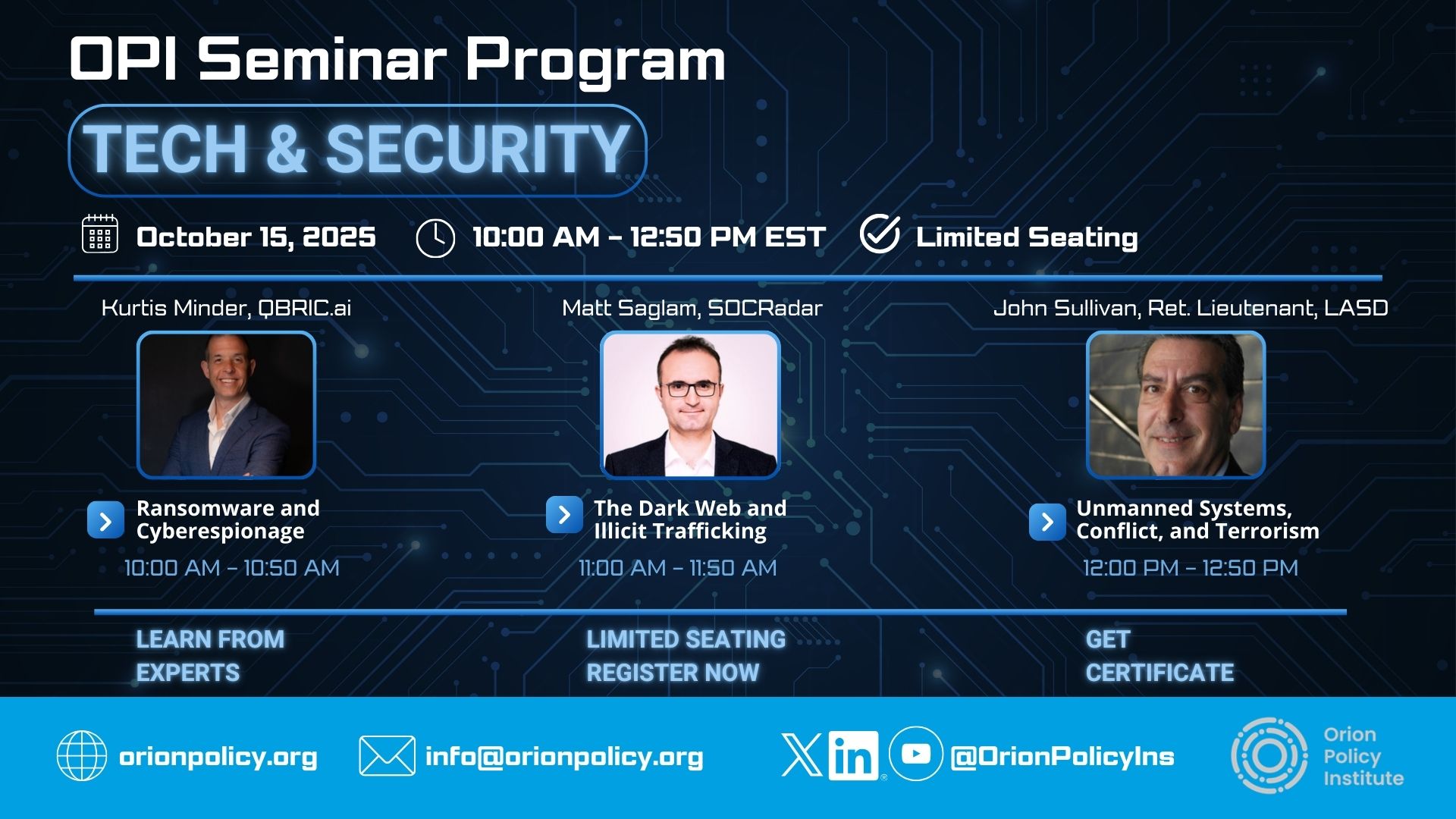
The India-Middle East-Europe Economic Corridor (IMEC) is a visionary infrastructure and cooperation initiative that was officially launched at the 2023 G20 Summit in New Delhi. The IMEC’s primary aim is to enhance connectivity and promote robust economic collaboration between India and Eurasia. The corridor comprises land rail links and shipping hubs designed to support regional prosperity, encourage political cooperation, ensure supply chain and energy security, and promote digital interconnectivity among signatory and traversed countries. The original signatories to the IMEC agreement were India, the United States, the United Arab Emirates (UAE), Saudi Arabia, Italy, France, Germany and the European Commission. Although Greece, Israel and Jordan have not yet officially signed the agreement, they are implicitly associated with the initiative due to the proposed route passing through the Port of Haifa, which serves as a gateway to the Mediterranean.
In this context, Trieste and its port are set to become much more strategically important. As the IMEC project evolves, Trieste is set to emerge as a potential gateway connecting Central and Eastern Europe. With its well-equipped facilities and deep-water access, the port will play a pivotal role in facilitating the flow of goods and services between nations, thereby enhancing regional commerce and fostering economic collaboration. Trieste’s advantageous location along the Adriatic Sea positions it as a vital hub for international shipping and logistics, driving growth and development in the surrounding areas.
The decision to initiate the IMEC project was influenced by a complex array of economic and political factors. In an increasingly volatile international environment, the economic advantages of IMEC are clear and substantial. The corridor has been strategically designed to promote regional prosperity by encouraging economic growth and development among the participating nations. It facilitates political cooperation and encourages diplomatic ties and collaborative governance among the participating countries. Additionally, the corridor focuses on strengthening supply chain security to ensure that trade routes remain reliable, efficient and resilient to disruption. The blockage of the Suez Canal caused by the grounding of the Ever Given container ship in March 2021, and subsequent attacks by the Houthi group in response to Israeli intervention in Gaza, have emphasised the need for alternative transport routes.
The initiative aims to improve digital connectivity to facilitate better communication between nations, reduce supply chain disruptions and lower energy costs, providing significant structural benefits. It is estimated that using land transport could reduce logistics costs by 30% and cut transport times by 40% compared to shipping through the Suez Canal. From a political standpoint, the project could counterbalance China’s Belt and Road Initiative (BRI). IMEC was originally conceived as an offshoot of the ‘West Asian Quad’, a trade alliance comprising the US, India, Israel and the UAE, formed in the aftermath of the Abraham Accords. The initiative is based on the principle that trade cannot thrive without trust and aims to foster both commerce and confidence among the participating nations.
The European Union has progressively aligned itself with the initiative’s foundational vision, recognising its significant economic and political ramifications. As the main market at the end of the proposed route, Europe has a crucial role to play in ensuring the success of IMEC. Officials in Brussels have acknowledged that the success of the IMEC could transform the global landscape of connectivity and trade. This transformative project could set a precedent for analogous transregional initiatives in future, enhancing collaboration and fostering economic growth across various regions. From the political perspective, the project is seen as a way for Western players and India to offer an alternative to Chinese infrastructure and influence.
The project’s feasibility is primarily constrained by widespread political instability and inadequate security. Despite the project’s initial momentum, the escalating instability in the Middle East — particularly the conflict between Israel and Hamas that erupted following the Hamas attack on 7 October 2023, and the subsequent war between Israel and Iran — has cast significant doubt over its feasibility. The ensuing war in Gaza and theIsraeli military’s targeting the Palestinian civilian population has undermined the normalisation agreement between Saudi Arabia and Israel. Given the essential role of the Saudi Arabia–Jordan–Israel rail link in the project, this agreement was seen as crucial for the development of the IMEC initiative. While normalisation would help to overcome political and logistical challenges, it is not an absolute prerequisite for progress. The project can still advance with prudent diplomatic management.
Meanwhile, the closure of the Bab al-Mandeb Strait due to Houthi attacks on passing vessels has further emphasised the need to establish a trade route through safe, stable countries that share our values. A significant additional hurdle is the lack of progress in setting up a secretariat or coordinated development plan among the various signatories. Another source of uncertainty is the IMEC project’s main sponsor, the United States. The Trump administration’s decisions have intensified volatility in relations with allies, creating an atmosphere of general unreliability and mistrust. Consequently, doubts remain over the United States’ genuine medium- to long-term commitment to the initiative.
These dynamics have presented the European Union with both challenges and opportunities. Thanks to its robust regulatory and logistical capabilities, the EU is well-placed to play a leading role in establishing the rules for the IMEC — a task closely tied to political considerations. From Brussels’ perspective, it is essential to strengthen bilateral relations between the EU and India. The European Commission has long recognised the importance of establishing stable, long-term economic partnerships with countries other than the United States. India is a vital strategic partner, offering a viable alternative to China and strengthening the EU’s position. The most significant challenge for Europe will be to achieve political unity on this issue. Notably, France and Italy have taken substantial steps towards this goal by appointing a special IMEC envoy. This envoy is responsible for representing the national interests of these two countries, as well as those of the two main ports competing to become IMEC arrival points: Marseille and Trieste. While there is no genuine intra-European competition, it is crucial for the EU to present a united front. Consequently, the EU must make a decisive choice and focus on one Mediterranean port. A clear, collective decision at EU level would strengthen Europe’s position and influence in the IMEC project and beyond. An increasingly discussed scenario foresees to designate Trieste as the main arrival hub and Marseille as a secondary port. Behind this decision lay European balances and the idea that IMEC aims to establish multiple routes, hubs and assets. This concept resembles a “network” of rivers converging into a single tributary rather than “just” a corridor.
In this context, the Port of Trieste is a standout strategic asset and a potential ‘Via Aurea’ for India in Europe. This historic Italian port city plays a pivotal role in Europe’s economic relationship with the Indo-Pacific region. Its advantageous location near major European cities, combined with a robust industrial network, establishes it as a vital hub for trade and infrastructure development. Trieste is well-placed to leverage its existing, well-established infrastructure. The city boasts robust connections to Central and Eastern Europe via an extensive network of railways and highways. Trieste’s maritime terminal boasts unmatched connectivity within Europe and transports goods by rail to Austria, Germany, the Czech Republic, Hungary, Slovakia and Italy’s industrial heartland. Furthermore, in addition to these vital rail links, which will be especially significant for EU initiatives by 2050, a well-developed road network connects Slovenia and Croatia. Trieste’s infrastructure capabilities are comparable to those of France’s port of Marseille and the Greek ports of Thessaloniki and Piraeus. Various stakeholders, including Rome and Washington, see Trieste as a vital strategic hub. This hub would be capable of connecting India to the heart of Europe and beyond. The city and its port have the potential to become a pivotal reference point for trade routes traversing the Balkans towards the Black Sea and extending northwards along emerging pathways to the Arctic. However, to realize this vision, Trieste — whose history is marked by its status as a melting pot of peoples and cultures — must demonstrate its ability and willingness to engage with the global community. In essence, the city must overcome its fear and mistrust, embrace change, and adopt a broader view of its global role. For this reason, the recent reshuffle of port management, which was largely based on political considerations, risks causing Trieste to lose ground at a time when unity, competence and professionalism are essential for tackling the many challenges ahead.
The IMEC is not just a project that aims to redefine global trade routes. Rather, it is situated within a rapidly evolving international environment that is characterised by shifting global power dynamics. By connecting Europe, and particularly Italy — a leading manufacturing European country— with India, an emerging manufacturing powerhouse, the project is set to have a significant impact on future political landscapes. Consequently, the challenges facing Trieste, Italy, and the EU are substantial. They must invest in and commit to this multi-vector initiative, regardless of the intentions and decisions of the US administration. Furthermore, the IMEC poses both an opportunity and a challenge for the EU: as an economic giant, it is increasingly expected to assume greater political responsibilities in the evolving global order. In conclusion, Trieste could become a gateway to a new Euro-Indo-Pacific vision — but only if Italy and Europe demonstrate the political will to invest in this choice, as well as the economic commitment.




